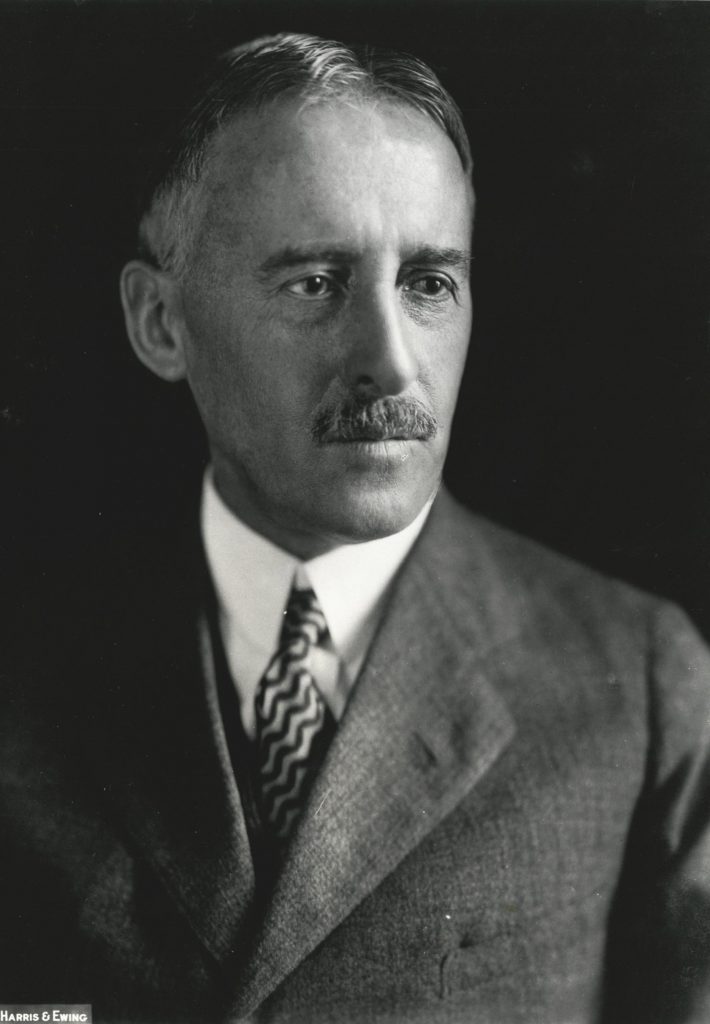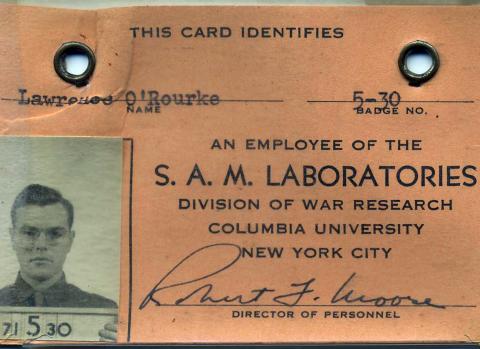Laboratory for the Development of Substitute Metals
The summer of 1942 proved to be troublesome for the fledgling bomb project. Col. James C. Marshall, with the Syracuse, New York Army Corps of Engineers, was picked to direct the new Laboratory for the Development of Substitute Metals (DSM). Marshall immediately moved from Syracuse to New York City where he set up the Manhattan Engineer District, established by general order on August 13th.
Marshall, like most other Army officers, knew nothing about nuclear physics. Furthermore, Marshall and his Army superiors were disposed to move cautiously. In one case, for instance, Marshall delayed purchase of an excellent production site in Tennessee pending further study, while the scientists who had been involved in the project from the start were pressing for immediate purchase.
While Vannevar Bush had carefully managed the transition to Army control, there was not yet a mechanism to arbitrate disagreement between the S-1 Executive Committee and the military. The resulting lack of coordination complicated attempts to gain a higher priority for scarce materials and boded ill for the future of the entire bomb project.
New decisions made in September provided administrative clarity and renewed the project’s sense of urgency. Both Bush and the Army agreed that an officer other than Marshall should be given the assignment of overseeing the entire atomic project, which by now was commonly referred to as the Manhattan Project.
General Leslie Groves
On September 17, 1942, the Army appointed Colonel Leslie R. Groves (promoted to Brigadier General six days later) to head the effort. Groves was an engineer with impressive credentials, including supervising the construction of the Pentagon, and, more importantly, had strong administrative abilities. Within two days Groves acted to obtain the Tennessee site and secured a higher priority rating for project materials. In addition, Groves moved the Manhattan Engineer District headquarters from New York to Washington. He quickly recognized the talents of Marshall’s deputy, Col. Kenneth D. Nichols, and arranged for Nichols to work as his chief aide and troubleshooter throughout the war.
Military Policy Committee
Bush, with the help and authority of Secretary of War Henry Stimson, set up a new Military Policy Committee (MPC), including one representative each from the Army, the Navy, and the Office of Scientific Research and Development (OSRD). Bush hoped that scientists would have better access to decision making in the new structure than they enjoyed when DSM and S-1 operated as parallel but separate units. With Groves in overall command (Marshall remained as District Engineer, where his cautious nature proved useful in later decision making) and the Military Policy Committee in place (the Top Policy Group retained broad policy authority), Bush felt that early organizational deficiencies had been remedied.
The Race for the Bomb
During the summer and fall of 1942 technical and administrative difficulties were still severe. Each of the four isotope separation processes remained under consideration, but a full-scale commitment to all four posed serious problems even with the project’s high priority. When Groves took command in mid-September, he made it clear that by late 1942 decisions would be made as to which process or processes promised to produce a bomb in the shortest amount of time. The exigencies of war, Groves held, required scientists to move from laboratory research to development and production in record time. Though traditional scientific caution might be short-circuited in the process, there was no alternative if a bomb was to be built in time to be used in the current conflict. As everyone involved in the Manhattan Project soon learned, Groves never lost sight of this goal and made all his decisions accordingly.
[The text for this page was taken from the U.S. Department of Energy’s official Manhattan Project history: F. G. Gosling, The Manhattan Project: Making the Atomic Bomb (DOE/MA-0001; Washington: History Division, Department of Energy, January 1999), 13-14.]





